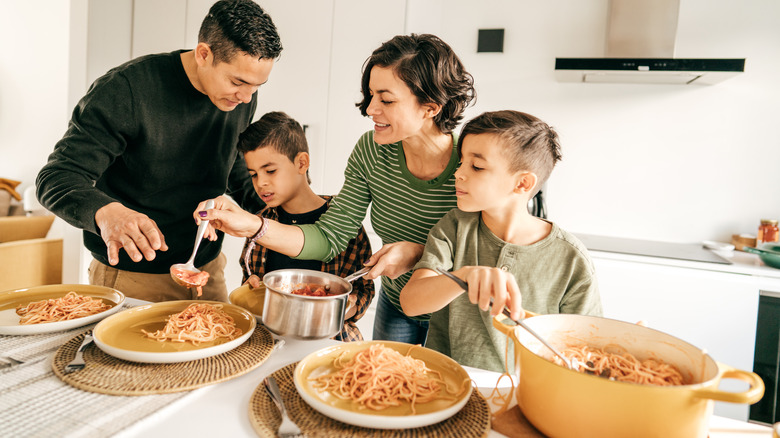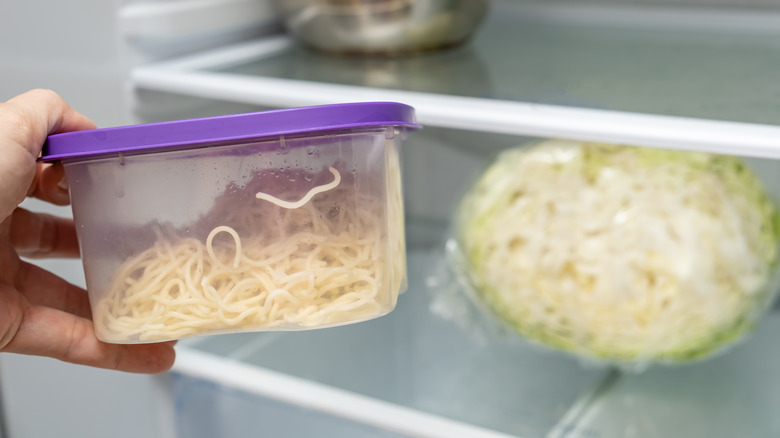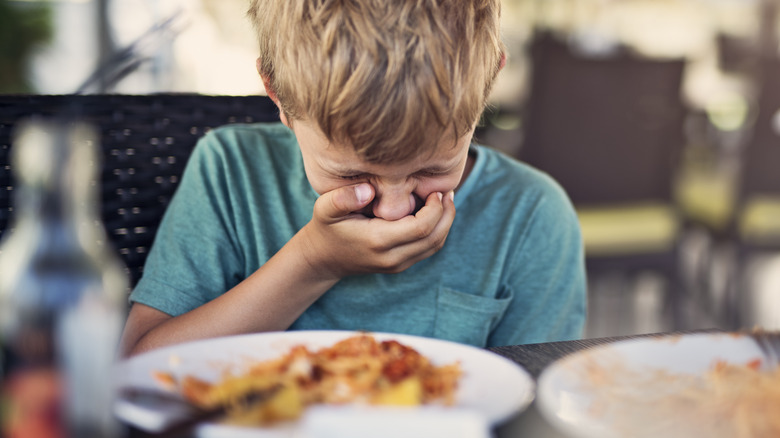Turns Out Leftover Pasta Can Be Deadly. What We Know
Reheating leftovers can be a great way to save time and money, and pasta dishes are a great example. Whether you're a fan of Italian classics or Asian noodle bowls, pasta is a versatile ingredient that offers endless possibilities for culinary creativity and delicious leftovers. However, it's essential to be mindful of potential health risks when reheating your pasta.
Improper storage and handling of some leftovers can lead to the growth of Bacillus cereus (B. cereus), a microscopic organism commonly found in pasta. This can result in the release of harmful toxins that pose a significant health hazard (per Cleveland Clinic). Every year, foodborne illnesses affect millions of individuals in the U.S., resulting in hospitalizations and even deaths. According to the Centers for Disease Control and Prevention (CDC), approximately 48 million people become sick; 128,000 are hospitalized; and 3,000 die due to foodborne diseases. While pasta itself may not be the problem, it is essential to handle and store leftover pasta with care to prevent any risk of foodborne illness.
Microbial culprits in your leftover pasta
Bacillus cereus (B. cereus) is a type of bacteria that can cause food poisoning. It is found in soil and food and can survive in cooked food. B. cereus food poisoning can cause diarrhea, vomiting, and nausea. According to the U.S. Department of Agriculture (USDA), pasta is often associated with B. cereus food poisoning, primarily because pasta is frequently cooked in large batches and stored at room temperature for several hours before being served. This gives B. cereus spores a chance to germinate and grow.
To ensure the safety of reheated food, make sure that every portion of the food reaches an internal temperature of at least 165 degrees Fahrenheit. By doing so, you can significantly reduce the risk of harmful bacteria and prevent foodborne illnesses. However, it's important to note that this may not eradicate some toxins. In particular, the endospores of the B. cereus bacterium can be especially tough to eliminate, even with high temperatures. The USDA recommends that you refrigerate cooked food as soon as possible to prevent any contamination. Avoid leaving pasta or other cooked food items outside at room temperature for more than two hours. And, if you're ever unsure about the safety of a particular food item, it's always better to be safe than sorry and dispose of it to avoid any risk of contamination.
Recognizing foodborne illness symptoms
There are two distinct forms of illness that Bacillus cereus can cause, which are often mistaken for the 24-hour stomach flu (per Ohio State University Extension). The first is known as the diarrheal form, which is characterized by symptoms such as watery diarrhea, abdominal cramps, and pain. These symptoms usually begin to appear six to 15 hours after consuming contaminated food. The second form, called the emetic form, is characterized by symptoms such as nausea and vomiting that start anywhere from 30 minutes to six hours after consuming the contaminated food. According to FoodSafety.gov, both forms of illness usually last for about 24 hours, and most people recover without medical treatment.
In most cases, self-care measures like staying hydrated and getting plenty of rest are sufficient to recover from B. cereus food poisoning. However, if the symptoms are severe or persistent, or if you are part of a high-risk group, it's crucial to seek medical attention. High-risk groups include individuals with weakened immune systems, the elderly, and young children.



